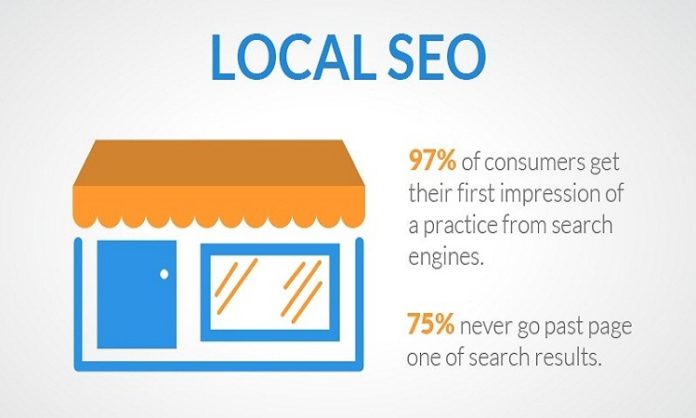We often think of search as a direct marketing channel (and it’s a great one) but it’s so much more than that.A Search Engine is a database of intentions – and the data that search engines release to us can be some of the best market research and planning data available.With this process you can map search demand in your markets, and understand how to use search volume data for market intelligence and insight.
Now, no matter the vertical your business is into, it is crucial that you know what your target market looks like before diving in and planning your SEO strategy. By the end of this article, you’ll know how to exploit data so that it drives revenue to your business.
Mapping Search Demand in a Vertical
As with any SEO-drive process, you need to begin with some quality keyword research. You’ll want to start by gathering an extensive list of keywords that represent searches in the vertical you are looking to dissect.
To start your mapping research, use this process:
Brainstorm a Seed Keyword Set
The best SEO tool is always – and will always be – your brain.
Put it to work , and start brainstorming a list of relevant keywords.
For example, let’s say we’re working with a company in the mechanical keyboard space. Mechanical keyboards are very loud, high-end keyboards. They’re tend to be very popular amongst programmers, writers, gamers, and other folks with serious keyboard needs.
For this assessment, we’ll start with terms like:
- Mechanical Keyboard – a generic head term, and
- Cherry MX Keyboard – a base product term.
And some other terms closely related to them.
Expand Your Set Using Google Suggest
Next, I’ll expand your list with Google Suggest.You can just use Google itself, or you can save some valuable time using some of the most popular autosuggest web apps like KeywordTool.io or Ubersuggest.
Expand Further and Gather Keyword Data with Term Explorer
One of my favorite new SEO tools is Term Explorer. This tool enables you to both expand keyword lists, gather search volume, and get competitiveness data. It is an excellent market research tool.I’ll drop keywords from my previous exercise into TE’s Bulk Keyword Tool (a research and autosuggest engine capable of grabbing search data on up to 90,000 keywords) – so it will go out and find more relevant keywords in addition to our seeds.
Now Add in Brand Modifiers
While search marketers are typically primarily concerned with non-branded traffic, or brands and modifiers, in many scenarios )especially ecommerce) it’s worth adding them into your keyword research to get an understanding of how their volume compares to that of non-brand terms.It’s also helpful to take a look at these different brands in Google Trends (especially if you can niche down to the product level), to get an idea of who’s growing and who’s not:
Now to Analyze The Volume and Trends
Now let’s do some analysis, and hopefully gather some insights.To get all the data you’ll need you will want to pull down everything from Term Explorer’s keyword analysis tool, and throw it into Excel (or Tableau, or R, or Python, or your favorite data visualization tool).You can use whatever you’d like – I’ll use Excel for simplicity in this example.I’ll go ahead and copy and paste it all into a table so I can pivot it later.
Additionally, I’ll want to go ahead and add a “type” column, referring to what sort of search intent is behind the keyword phrase.In this case, I’ll add:
- Brand (for searches referring to a specific brand)
- Usage (for searches like “Mechanical Keyboard for Programming”)
- Comparison
- Features
- Informational
- Switches (in this case, a category unique to the space, but if there’s a certain attribute lots of people search for, make it it’s own category.)
Now if you’re a search marketer, you’re probably already plotting how to use this data. But let’s start by using some basic visualization techniques to get our head around what people value in the Mechanical Keyboard space.Let’s start by looking at switches. Different mechanical keyboards have different types of switches, each with their own pros and cons.
I’ll pivot my table into showing only switches, and then take a look at the volumes for each with a simple bar chart:As you can see, blue switches are dramatically more popular than brown switches, which are more popular than red switches, and so on.Now this information is tremendously useful in conventional SEO campaigns – after all, if there’s no search volume, there’s little to optimize for – but it’s also useful for:
- Inventory analysis– what should we order, especially if we don’t have historical data to draw on?
- Merchandising– Which switches should be at the top of the switch page? Probably the blue ones. Using search volume analysis in parallel with traditional techniques like market basket analysis can give you new insight into how to merchandise your site/store.
- Offer Creation – Knowing that blue switches are 4X more popular than red switches is a valuable insight when you’re creating campaigns, give-aways, social media updates, and more.
Market Analysis
Let’s take a look at another example, dear to our hearts as marketers.So what do people do with these mechanical keyboards? This is closely related to the question “Where can I find people who buy mechanical keyboards?”











